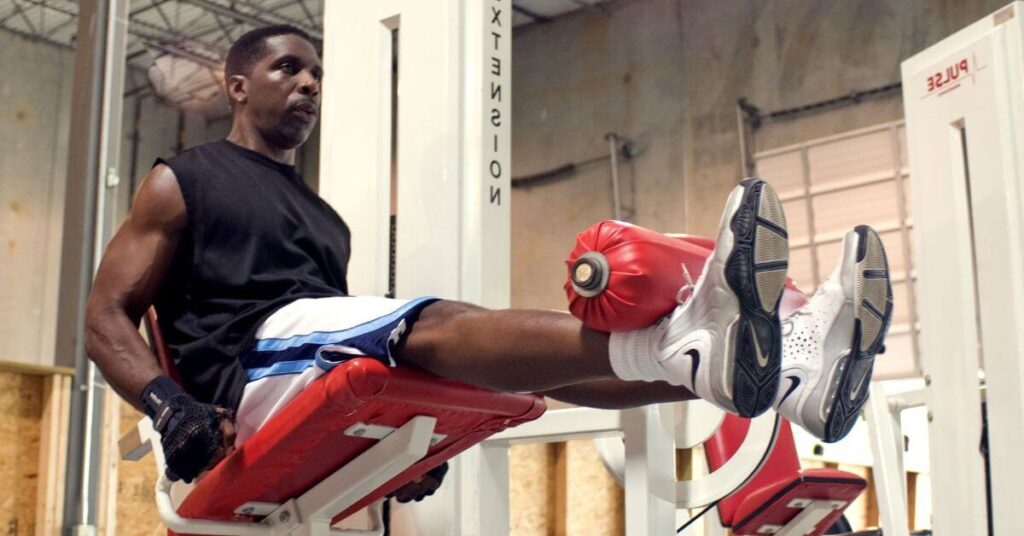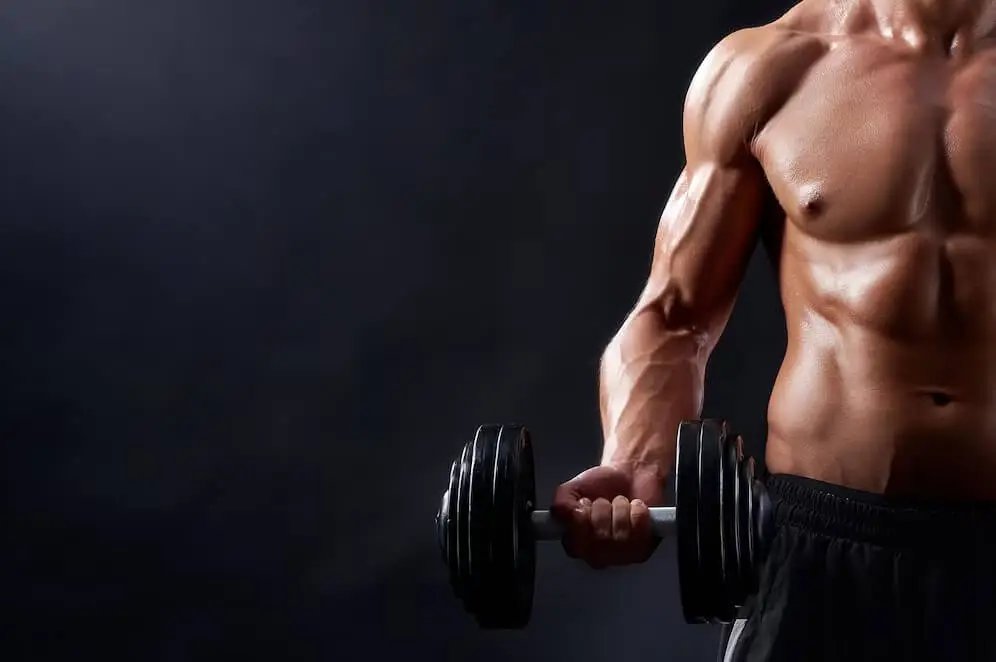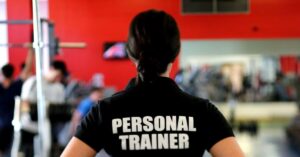If you’re tired of cookie-cutter workouts that leave you feeling uninspired, it’s time to shake things up with this dynamic and versatile approach.
Forget complicated routines and endless hours in the gym. With the push-pull-legs split, you’ll streamline your workouts, maximize efficiency, and achieve real results – all while maintaining a laid-back and comfortable vibe.
Keep reading!
What Exactly is the Push-Pull-Legs (PPL) Workout Plan?

Before we go into the nitty-gritty details, let’s break down what the push-pull-legs (PPL) workout plan is all about. Unlike traditional workout splits that focus on training specific muscle groups each day, the PPL approach divides your workouts into three main categories: push, pull, and legs.
1. Push
This workout targets all the muscles involved in pushing movements, such as the chest, shoulders, and triceps. Think bench presses, shoulder presses, and tricep dips.
2. Pull
As the name suggests, the pull workout focuses on muscles used in pulling movements, including back and biceps. Get ready for rows, pull-ups, and bicep curls.
3. Legs
Time to give those lower body muscles some love! The leg day workout concentrates on exercises like squats, lunges, and deadlifts to strengthen your quads, hamstrings, and glutes.
By organizing your workouts into these three categories, you can effectively train all major muscle groups while allowing adequate rest and recovery between sessions.
Plus, it adds a nice element of variety to your routine, keeping things fresh and exciting.
The Benefits of a Push-Pull-Legs Workout Plan

Now that you have a basic understanding of what the PPL workout plan entails, let’s talk about why it’s worth incorporating into your fitness routine. Here are some key benefits:
1. Efficiency
With the push-pull-legs split, you can hit the gym just three times a week while still ensuring each muscle group gets the attention it deserves. This makes it perfect for those with busy schedules or anyone looking to optimize their time in the gym.
2. Muscle Growth
By targeting different muscle groups on different days, you can maximize muscle stimulation and promote growth. Plus, the compound exercises typically included in PPL workouts (think squats, deadlifts, and bench presses) are excellent for building strength and muscle mass.
3. Balanced Development
One common pitfall of traditional workout splits is overemphasizing certain muscle groups while neglecting others. With the push-pull-legs approach, you ensure balanced development throughout your entire body, leading to a more symmetrical and proportionate physique.
4. Flexibility
While there are suggested exercises for each category, the PPL workout plan offers plenty of flexibility to tailor your workouts to your individual goals and preferences. Feel free to swap out exercises or adjust the volume and intensity based on what works best for you.
READ MORE: Top 20 Best Shoulder Cable Exercises for Beginners to Pro Body Builders
5. Improved Recovery
By alternating between different muscle groups on consecutive days, the PPL workout plan allows for adequate rest and recovery for each muscle group. This can help reduce the risk of overtraining and prevent burnout, ultimately leading to better performance in the gym and faster progress over time.
6. Enhanced Functional Strength
Many of the exercises included in the push-pull-legs routine are compound movements that engage multiple muscle groups simultaneously. This not only promotes muscle growth but also improves overall functional strength, making daily activities easier and reducing the risk of injury in real-world scenarios.
7. Increased Metabolic Rate
The high-intensity nature of PPL workouts, coupled with the use of compound exercises, can help elevate your metabolic rate both during and after your workout. This means you’ll continue burning calories even after you’ve left the gym, making it an effective strategy for those looking to shed excess body fat and improve body composition.
8. Versatility and Adaptability
The push-pull-legs workout plan can be easily customized to suit your individual fitness level, preferences, and specific goals. Whether you’re aiming to build mass, increase strength, or improve endurance, the PPL approach offers plenty of flexibility to tailor your workouts accordingly.
Sample Push-Pull-Legs Workout Plan
Here’s a simple yet effective push-pull-legs workout plan that you can follow:
– Push Day
| Bench Press | 4 sets x 8-10 reps |
| Overhead Press | 3 sets x 8-10 reps |
| Incline Dumbbell Press | 3 sets x 10-12 reps |
| Tricep Dips | 3 sets x 10-12 reps |
| Lateral Raises | 3 sets x 12-15 reps |
– Pull Day
| Deadlifts | 4 sets x 6-8 reps |
| Pull-Ups | 3 sets x max reps (or assisted pull-ups) |
| Barbell Rows | 3 sets x 8-10 reps |
| Face Pulls | 3 sets x 12-15 reps |
| Bicep Curls | 3 sets x 10-12 reps |
– Leg Day
| Squats | 4 sets x 8-10 reps |
| Romanian Deadlifts | 3 sets x 8-10 reps |
| Walking Lunges | 3 sets x 12 steps on each leg |
| Leg Press | 3 sets x 10-12 reps |
| Calf Raises | 3 sets x 15-20 reps |
Remember: Warm up properly before each workout and listen to your body. If an exercise doesn’t feel right or causes pain, don’t push through it. And always prioritize good form over lifting heavy weights.
Conclusion
Whether you’re a seasoned gym-goer or just starting out on your fitness journey, this versatile and efficient approach can help you achieve your goals and then some.
So, lace up those sneakers, hit the gym with confidence, and watch as your strength and physique transform before your eyes. With dedication, consistency, and a solid PPL workout plan in hand, the sky’s the limit!

Looking for an AI Personal Trainer at just $10/month?
FAQs: Best Push-Pull-Legs Workout Plan
Q. Is the push-pull-legs (PPL) workout plan suitable for beginners?
Ans. Absolutely! The PPL workout plan can be adapted to accommodate individuals of all fitness levels, including beginners. It provides a balanced approach to strength training while allowing for ample rest and recovery between workouts. Beginners can start with lighter weights and fewer sets, gradually increasing intensity and volume as they progress.
Q. How often should I do a push-pull-legs workout?
Ans. It’s generally recommended to perform the push-pull-legs routine three times a week, with at least one rest day in between each session. This allows for optimal muscle recovery and growth while preventing overtraining. However, some individuals may benefit from additional rest days or a modified schedule based on their individual goals and recovery capacity.
Q. Can I add cardio to my push-pull-legs routine?
Ans. Absolutely! Cardiovascular exercise can be a great addition to your PPL workout plan, whether you’re looking to improve endurance, enhance fat loss, or simply boost overall cardiovascular health. Consider incorporating cardio sessions on rest days or after your strength training workouts, being mindful not to overdo it and impede your recovery process.
Q. What if I don’t have access to a gym? Can I still do a push-pull-legs workout?
Ans. Absolutely! While the PPL workout plan traditionally utilizes gym equipment like barbells, dumbbells, and machines, it can be adapted to a home workout setting with minimal equipment. Bodyweight exercises such as push-ups, pull-ups, lunges, and squats can serve as effective alternatives.
Q. How long should a push-pull-legs workout session last?
Ans. The duration of your PPL workout session can vary depending on factors such as exercise selection, intensity, and rest periods. Generally, a push-pull-legs workout can last anywhere from 45 minutes to 90 minutes, including warm-up and cool-down periods. Focus on maintaining quality over quantity, ensuring each exercise is performed with proper form and sufficient effort to stimulate muscle growth and strength gains.




